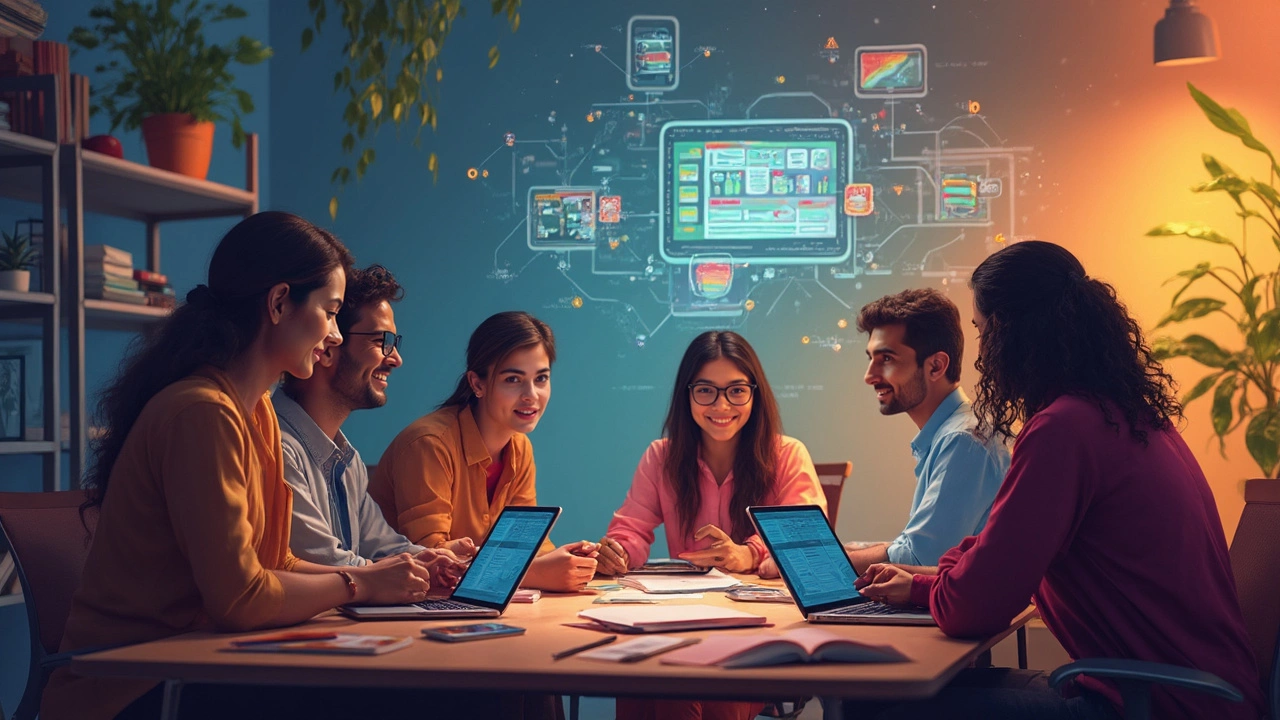Digital Classrooms: What They Are and Why They Matter
Ever wondered why every school talk now includes words like "virtual class" or "online learning"? The answer is simple: digital classrooms are turning traditional chalk‑and‑board teaching into something faster, more flexible, and often more fun. In India, where students come from tiny towns to huge metros, a digital classroom can bridge gaps that once seemed impossible to close.
With a stable internet connection and a laptop or phone, a 10‑year‑old in a village can attend the same math lesson as a 15‑year‑old in Delhi. The result? More equal access, better engagement, and a chance for teachers to use fresh tools that keep students awake.
Why Digital Classrooms Matter for Students and Teachers
First, digital classrooms let teachers mix videos, quizzes, and live chats in one place. That means a science demo can be shown live, then a quick poll checks if everyone understood. If a student misses a class, the recording is there to catch up. Second, data from these platforms tells teachers exactly where a class struggles – no more guessing.
For students, the biggest win is flexibility. Need to study a chapter after dinner? Just log in. Want to revisit a tricky concept? Replay the video. And because many platforms support gamified elements, learning feels less like a chore and more like a game.
Key Tools and Tips for an Effective Virtual Teaching Experience
Not every app works for every school, but a few stand out. Google Classroom, for instance, packages assignments, feedback, and grades in a clean dashboard. It’s free, works on low‑end devices, and integrates with Docs, Slides, and Meet. If you need a full‑featured Learning Management System (LMS), platforms like Moodle or Canvas give you deeper analytics and customizable courses.
Here are three quick tips to get the most out of a digital classroom:
- Keep sessions short and focused. A 30‑minute live lesson plus a short quiz beats a 90‑minute lecture that drops attention.
- Use a mix of media. Pair a short video with a live discussion and a quick poll – the variety keeps eyes on the screen.
- Set clear expectations. Share a simple checklist: what to prepare, when to join, and how to submit work. Clarity reduces confusion.
Another practical idea is to create a shared folder for each class where you store recordings, worksheets, and extra reading. Students love having everything in one spot, and it cuts down on frantic email threads.
Finally, remember that not every student has high‑speed internet. Offer low‑bandwidth options like audio‑only recordings or downloadable PDFs. The goal is to include everyone, not just those with the best gadgets.
Digital classrooms are still evolving, but the core idea stays the same: use technology to make learning more accessible, engaging, and data‑driven. Whether you’re a teacher planning your first virtual lesson or a student looking for the best way to study online, the tools mentioned above give you a solid start. Keep experimenting, stay flexible, and watch how quickly the classroom can go from a physical room to a thriving digital space.
Ready to try it out? Pick one tool, set up a short test lesson, and see how your students respond. The future of education in India is already here – all you need is the right digital classroom to make it work.
